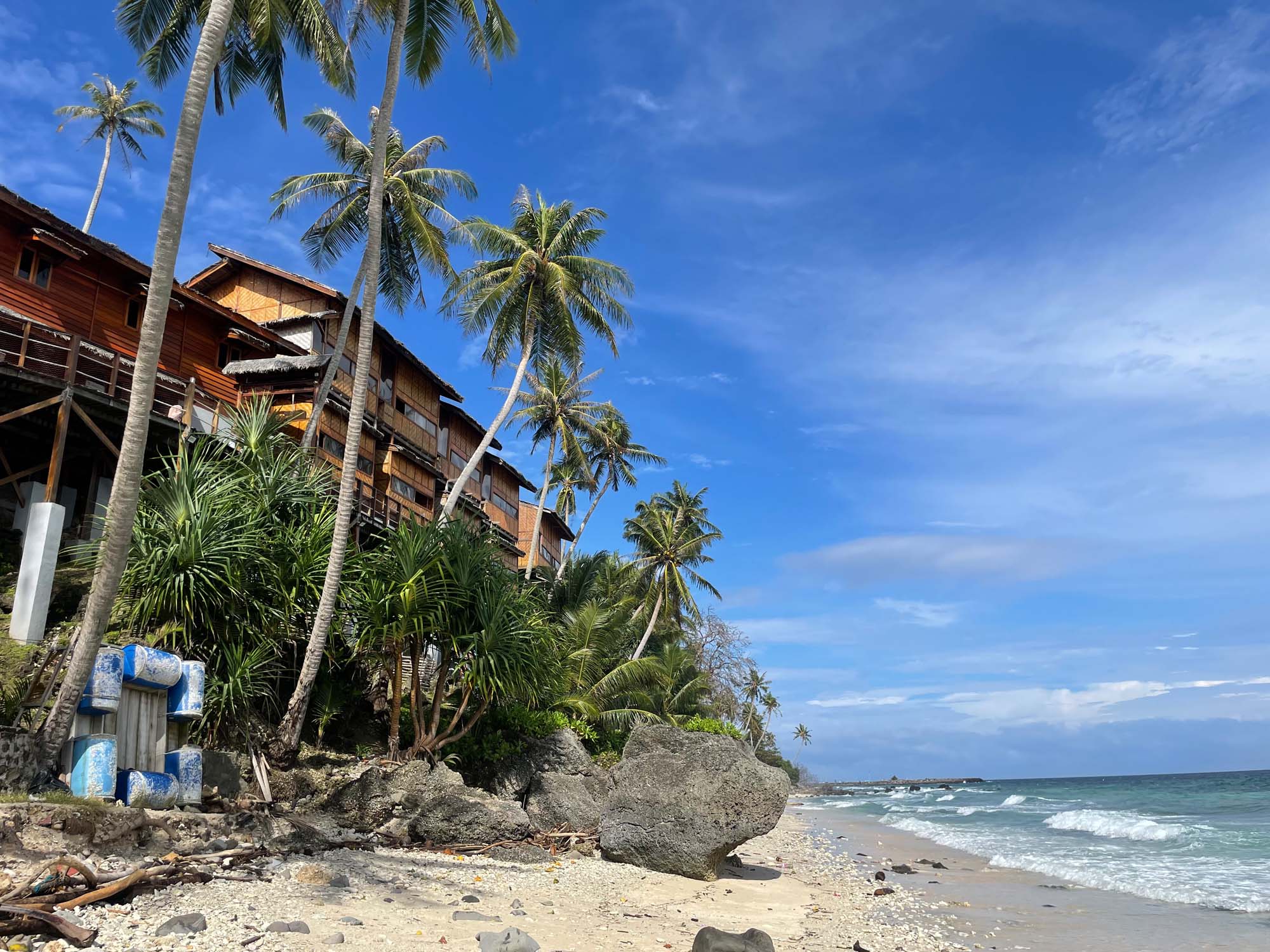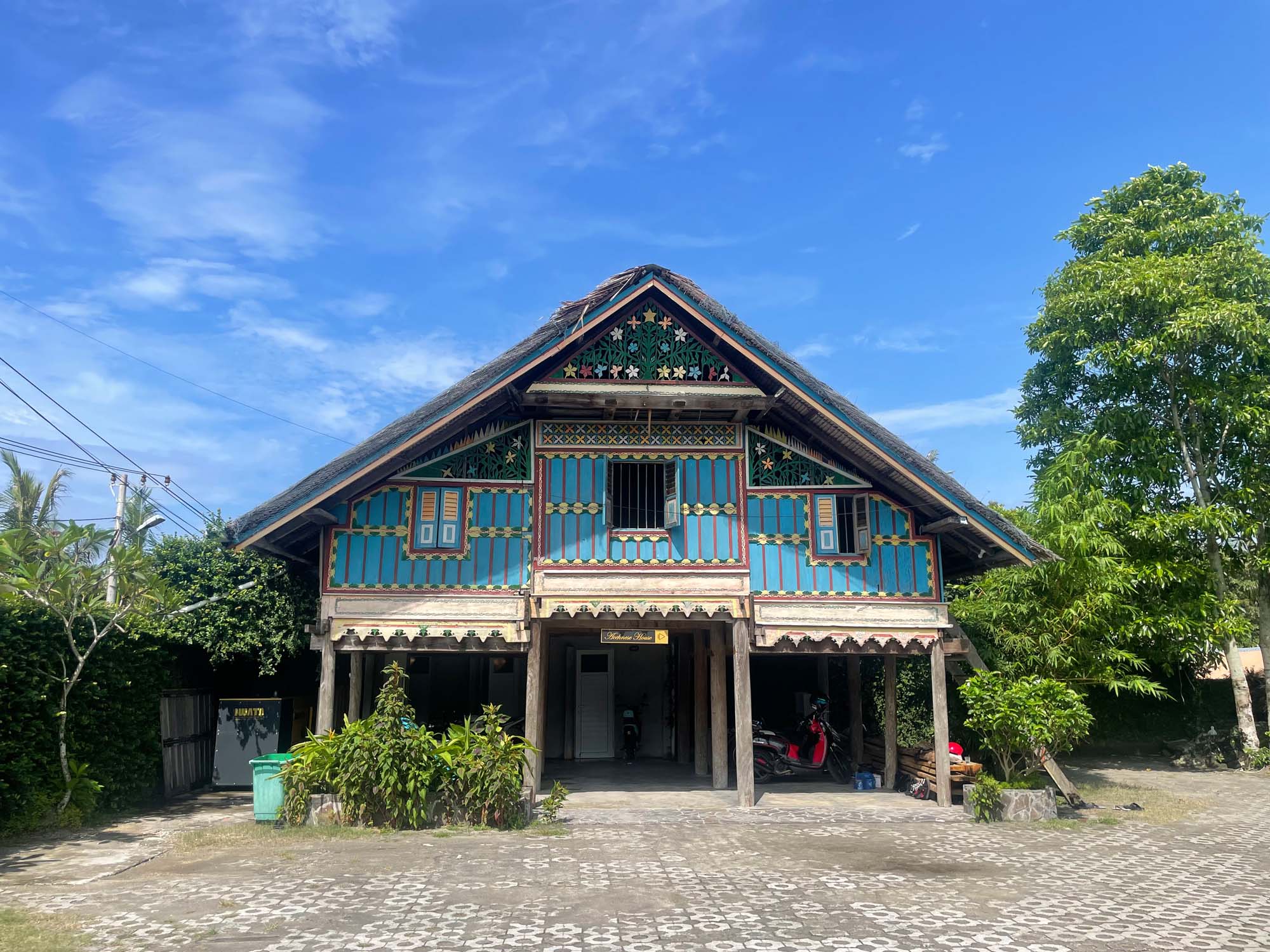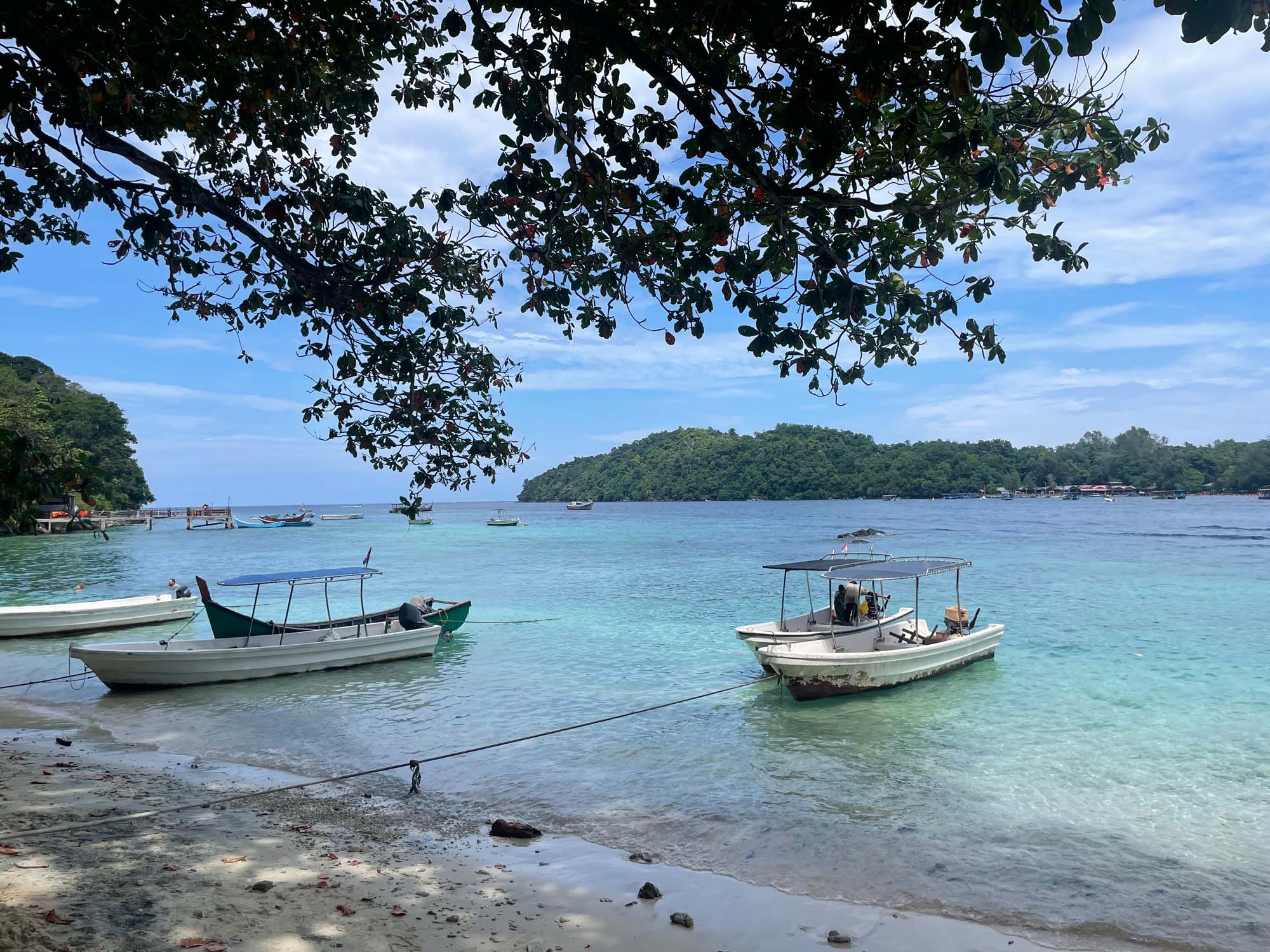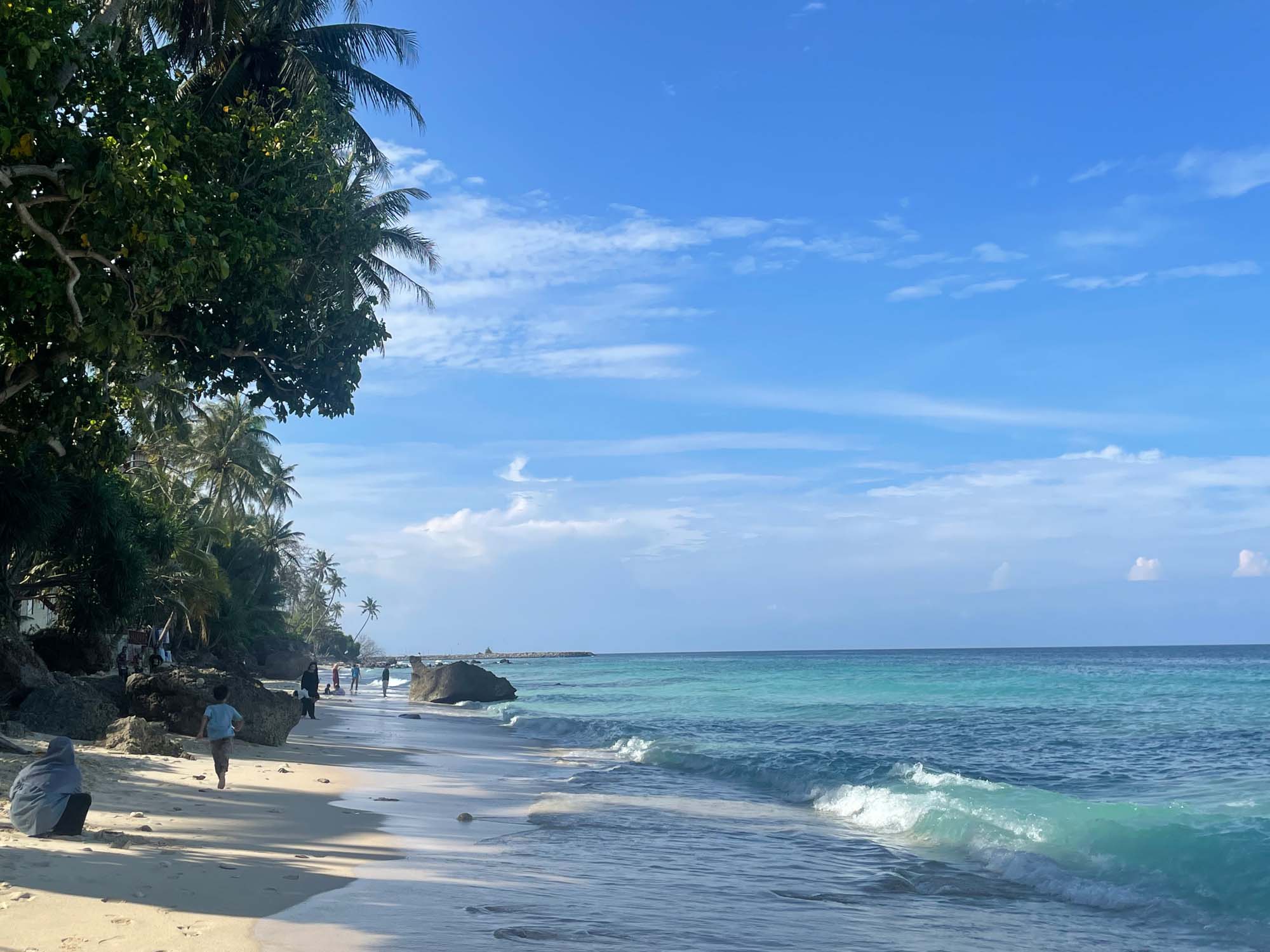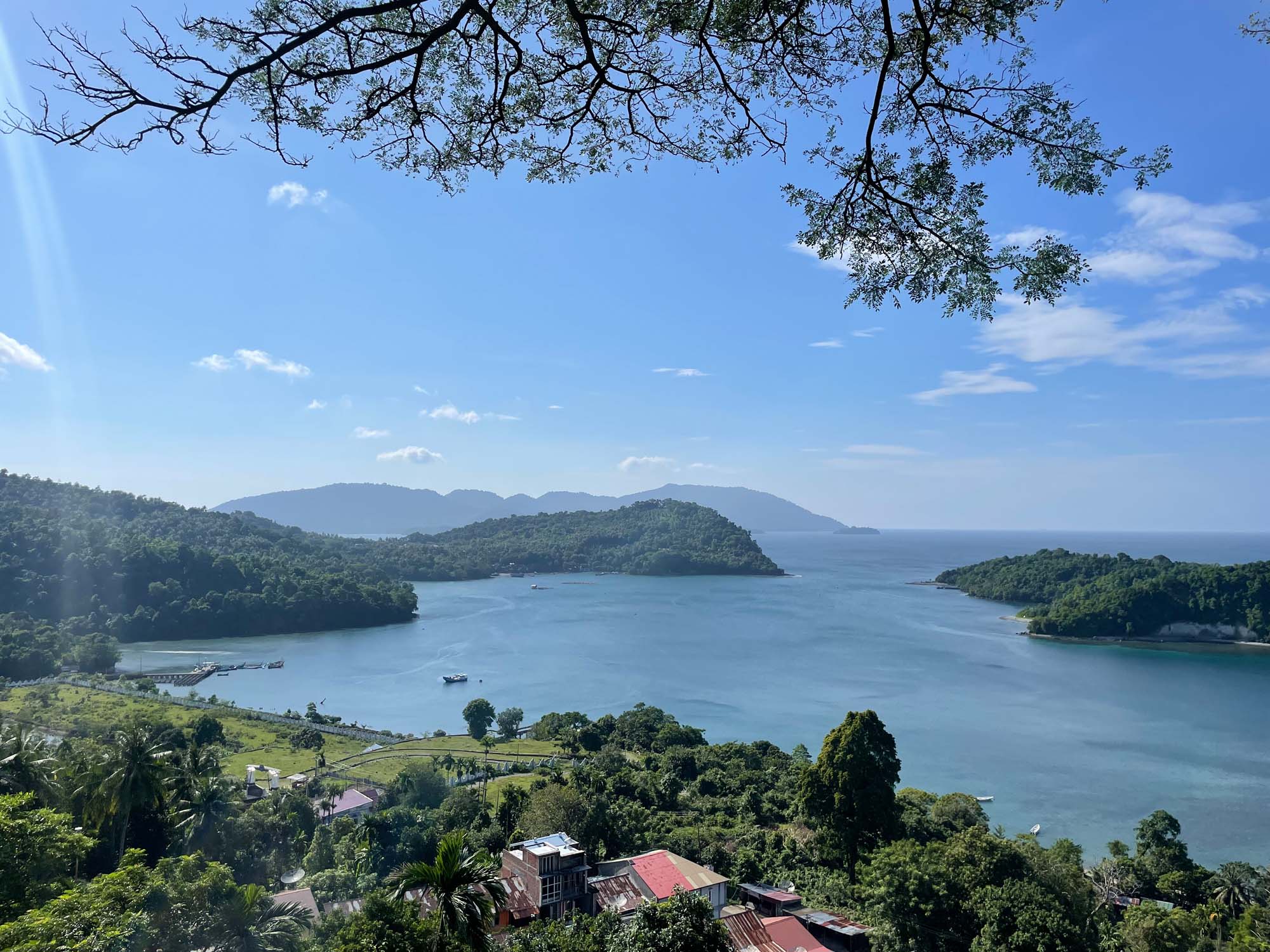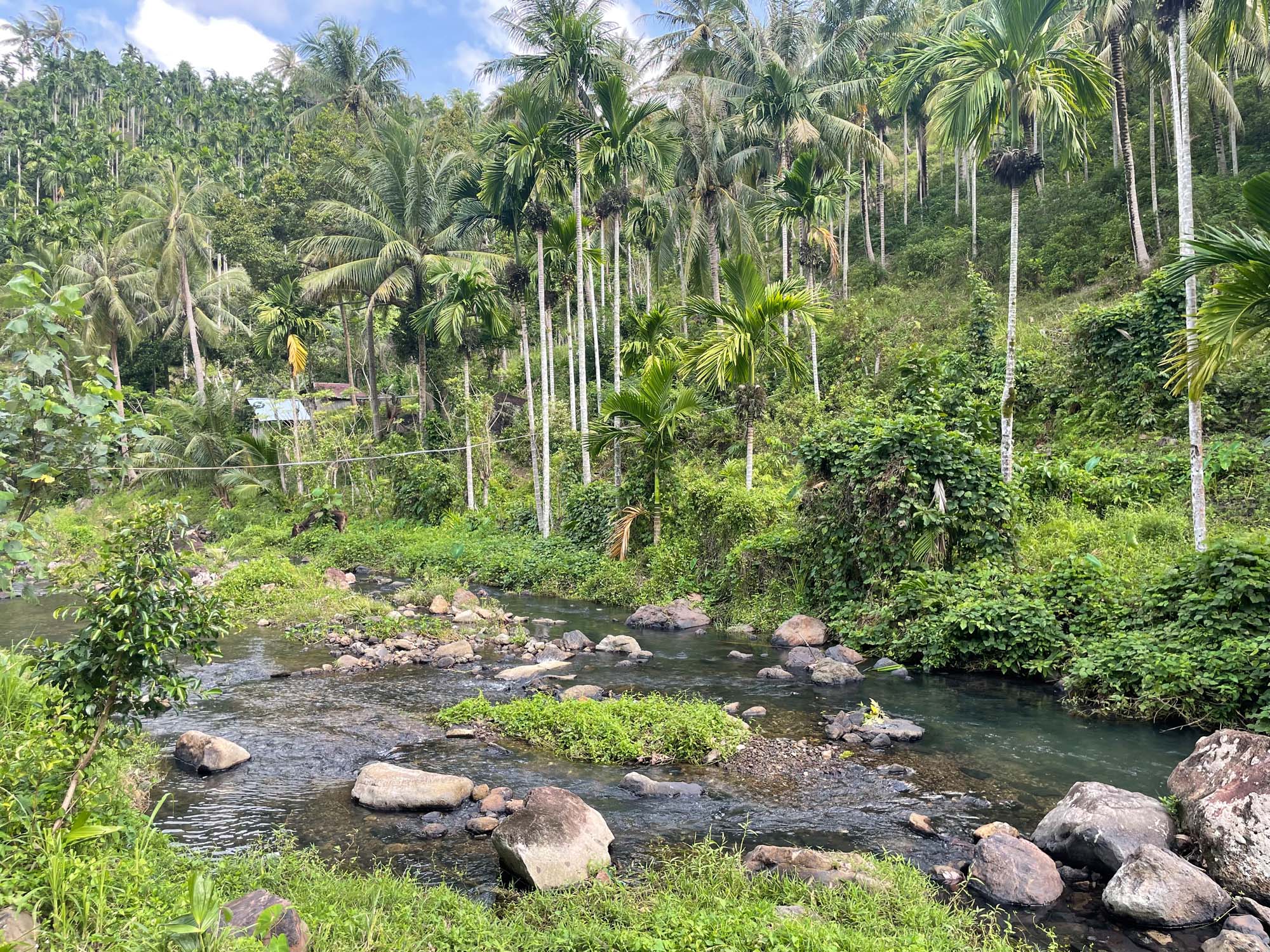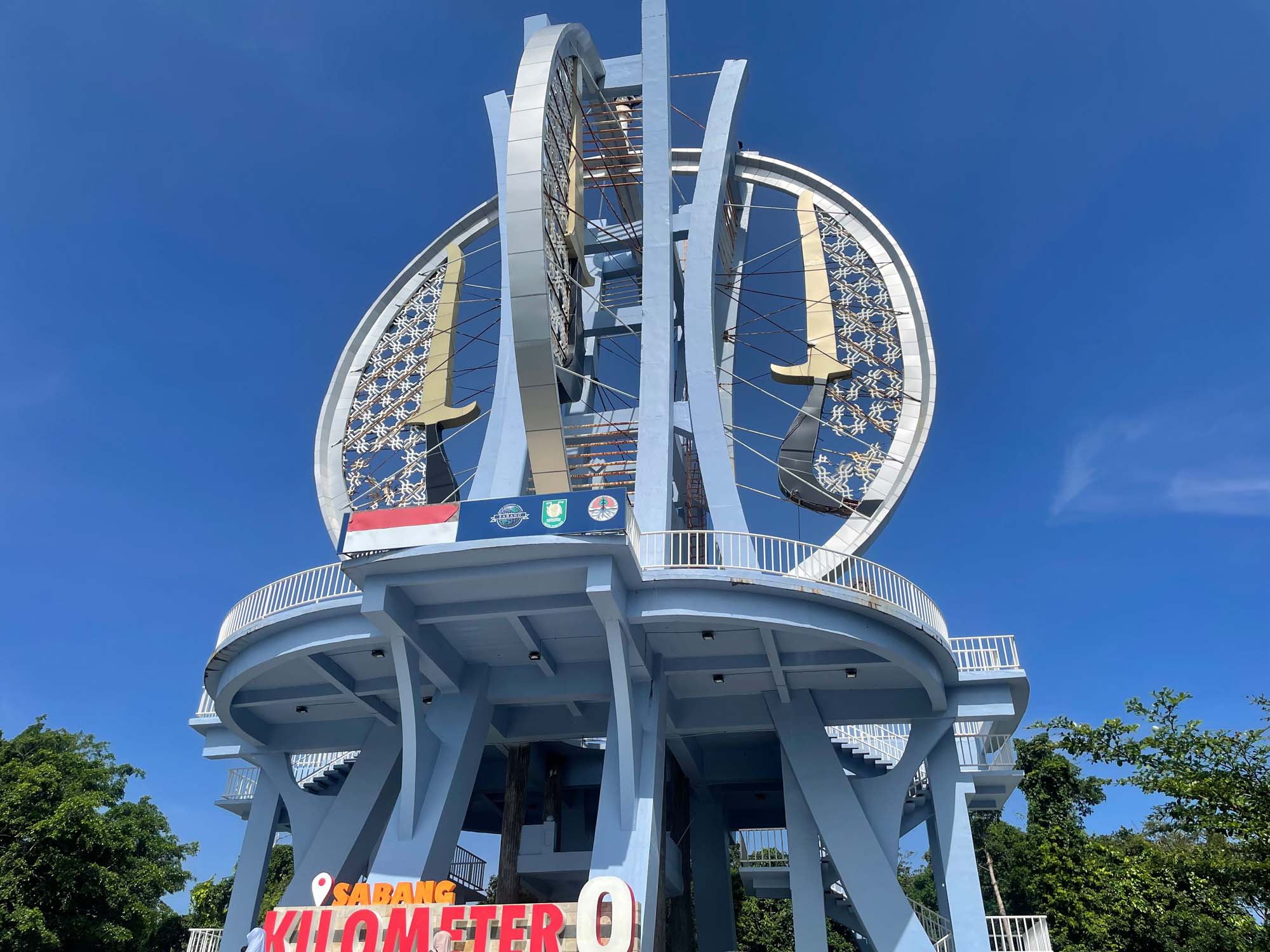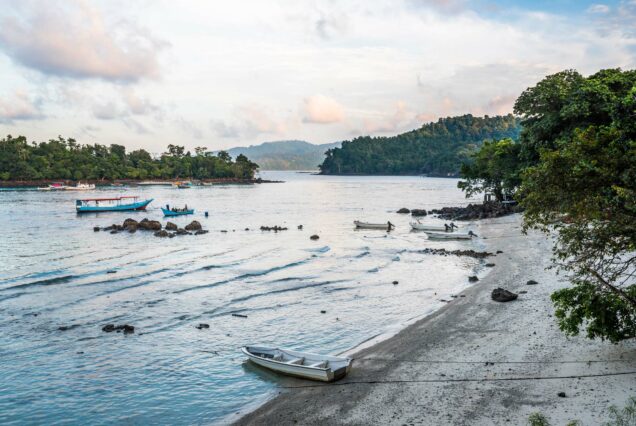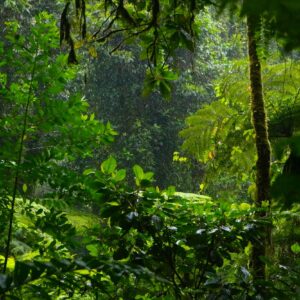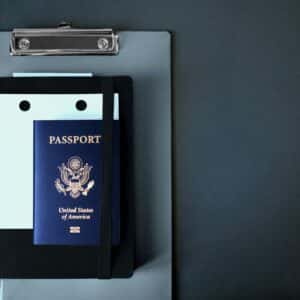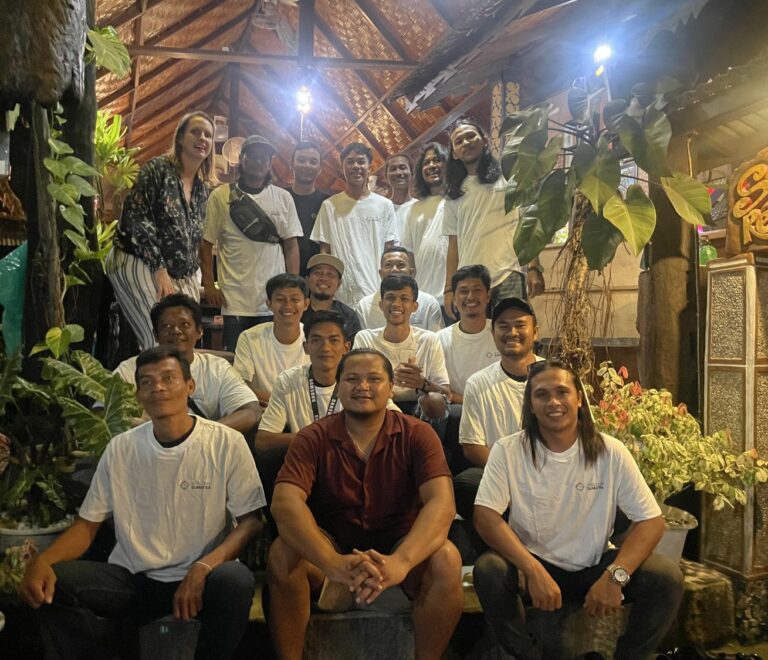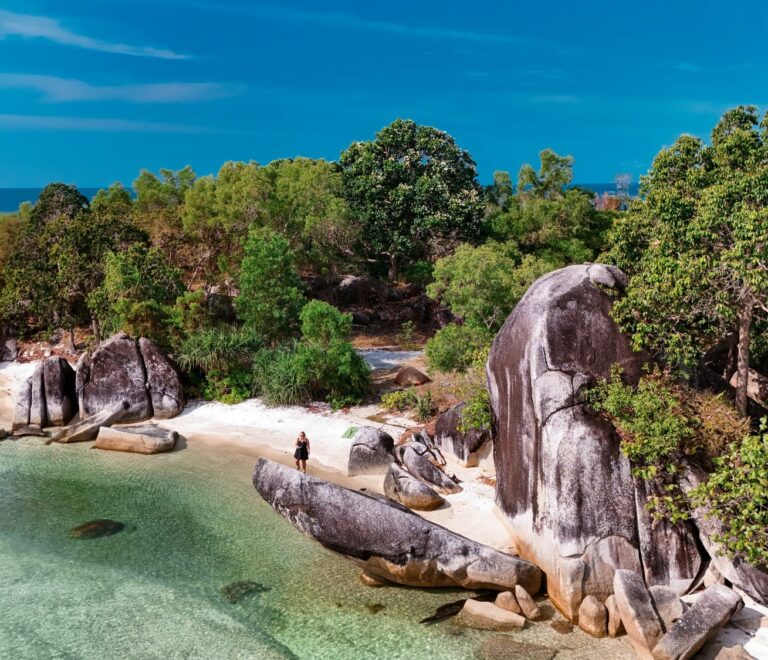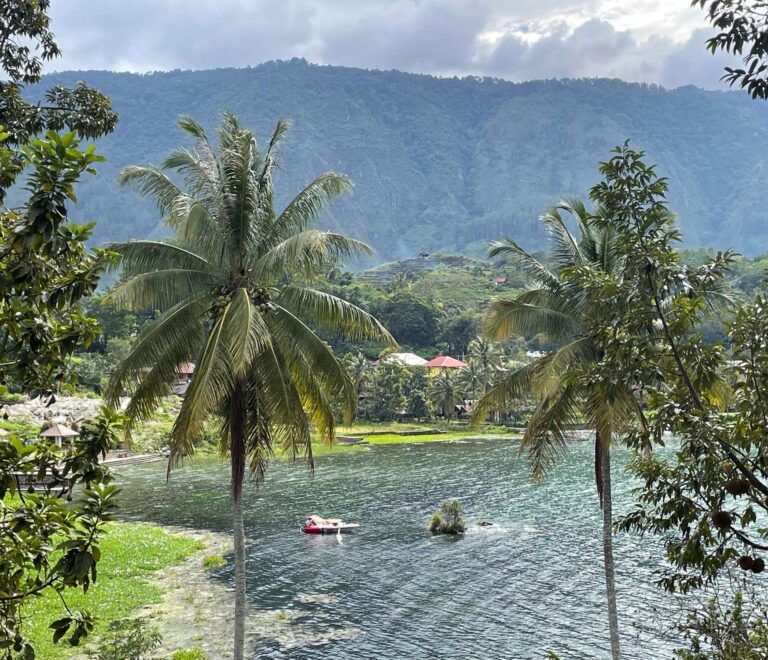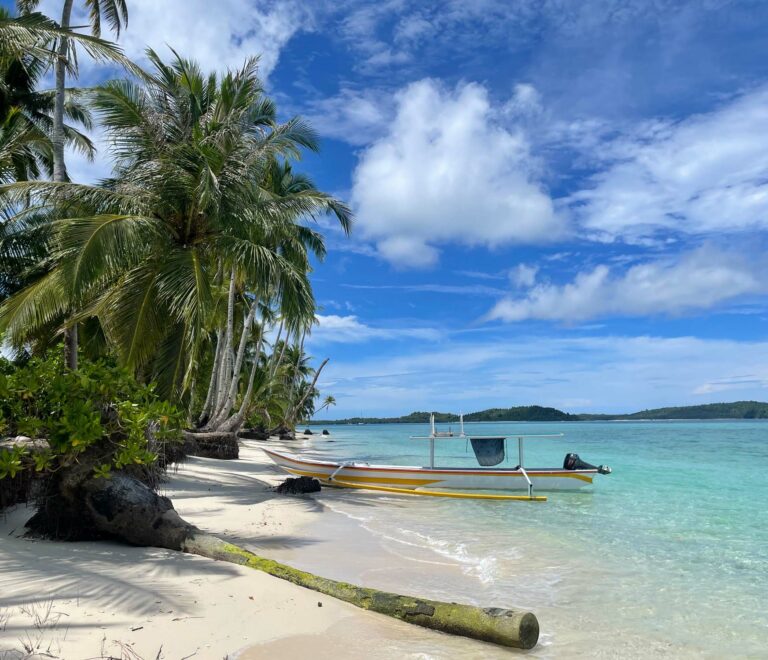Welcome to Pulau Weh – Sumatra’s underwater paradise for divers, snorkelers, and slow travelers. Pulau Weh, also known as Sabang, is a small island off the northern tip of Sumatra that offers pristine nature, vibrant marine life, and a relaxed island vibe. Known for some of Indonesia’s best diving and snorkeling spots, this volcanic island is a perfect destination to unwind, explore coral reefs, and enjoy spectacular sunsets. Whether you’re an experienced diver or just want to relax by the sea, Pulau Weh is a hidden gem waiting to be discovered.
Travel Guide for Pulau Weh
ToggleInformation about Pulau Weh
Things to Know in Advance
Pulau Weh is only accessible by ferry from Banda Aceh, the provincial capital of Aceh.It is a very local island. No fancy coffee shops or smoothie bowls. Swimming in a bikini is only allowed on some beaches, but high chance local will stare at you. So be prepared or wear shirt and shorts.
To make up for getting onto the island, we at Discover Sumatra recommend at least 3 nights on Pulau Weh.
Orientation
The ferry to Pulau Weh leaves from Ulee Lheue Port, about 20 minutes from Banda Aceh’s city center. From there, boats arrive at Balohan Port on Pulau Weh. The main tourist areas of Pulau Weh – Iboih Beach, Gapang Beach, and Sumur Tiga – are between 45 minutes to an hour’s drive from the port. Transportation is usually arranged by your guesthouse or available directly at the harbor.
How touristy is Pulau Weh?
Compared to Bali or Lombok, Pulau Weh remains basically untouched. The island is popular among divers, snorkelers, and adventurous travelers, but it has never developed into a mass tourism destination. In Iboih and Gapang you’ll find a cluster of dive shops, guesthouses, and cafés, but life still feels laid-back and simple. Sabang, the island’s main town, is more functional than touristy and gives an authentic view of everyday life. If you’re looking for nightlife and big resorts, you won’t find them here. Instead, Pulau Weh attracts travelers who value nature, tranquility, and a slower pace.
Tsunami of 2004
On 26 December 2004, Aceh province was hit by one of the strongest tsunamis in recorded history, triggered by a massive earthquake off the coast. Banda Aceh was devastated, with over 160,000 lives lost in the province. Pulau Weh was affected too, though less severely than the mainland. The island’s coastline was reshaped in some places, and several villages were destroyed. Today, the scars are still part of the landscape, but Pulau Weh has rebuilt and thrives as a peaceful travel destination. For many visitors, the island offers not only natural beauty but also a reminder of resilience and the power of nature.
Getting There and Around
Getting There
To get to Pulau Weh, you’ll first need to travel to Banda Aceh, either by night bus from Medan or plane from Medan, Jakarta or destinations outside Indonesia. From the city, it’s a 20-minute drive to Ulee Lheue Port, where ferries depart daily to Balohan, the main harbor on Pulau Weh.
As of 2025 there is only 1 flight per day from Medan, that arrives around 10am and the next fast ferry leaves at 4pm. You can arrange an airport pickup with your accommodation on Pulau Weh. The driver can also organise a sightseeing tour in Banda Aceh, to kill time until the ferry leaves.
There are two ferry options:
- Fast ferry (approx. 1h 15min): More comfortable and 3 times daily.
- Banda Aceh – Pulau Weh: 8am, 10am, 4pm
- Pulau Weh Banda Aceh: 8am, 2:30pm, 4pm
- Slow ferry (approx. 2.5h): Less expensive and better for those traveling with vehicles or scooters. Only once a day. Schedules are released 1 day before.
Tickets can be bought at the port or via local travel agents. It’s best to arrive at the port at least 30–45 minutes before departure, especially during weekends or holidays.
Getting Around
Once you arrive on the island, private drivers and motorbike taxis are available at the harbor. Most visitors stay in Iboih or Gapang, both popular beach areas on the west side of the island.
The best way to get around is by scooter (approx. IDR 100,000/day). Roads are narrow, hilly, and winding – so drive carefully. Some accommodations also offer bicycles or can arrange a car with driver or becak (tuktuk) for day trips.
Practical Tips
Sharia Law
Pulau Weh is part of Aceh province, where Sharia law is in place. While it’s less strictly enforced on the island than in Banda Aceh, visitors are still expected to respect local customs:
- Modest dress is appreciated, especially away from the beach.
- Public displays of affection should be avoided.
- Alcohol is technically prohibited but may be available discreetly at some guesthouses (ask your host directly).
Christian traditions such as Christmas or even New Years eve (as it is the Christian calendar) are not celebrated on the island.
Dress Code and Pack List
You can find a general pack list for Sumatra here.
- Swimwear: Bikinis are tolerated in Iboih and Gapang, but bring a sarong or cover-up for walking around. Public beaches in local villages are more conservative, bikinis are forbidden.
- Clothing: Lightweight, breathable clothes for the day; a light jacket for cooler evenings.
- Footwear: Flip-flops for the beach, sandals or shoes for hiking and scooters.
- Essentials: Reef-safe sunscreen, mosquito repellent, dry bag, snorkel gear (optional but can also be rented), and a flashlight and power bank for power outages.
Where to Stay on Pulau Weh
- Iboih Beach: The most popular area with budget guesthouses, dive centers, and beach cafés. Simple bamboo bungalows and oceanfront stays are common.
- Gapang Beach: A bit quieter and home to several dive resorts. Great for travelers seeking a peaceful vibe with easy beach access.
- Sumur Tiga Beach: Some nice accommodation along this pristine beach.
- Sabang town: Good for local experiences and access to the harbor but less scenic.
Popular places: Oh Lala Bungalows, Casa Nemo Beach Resort, Freddie’s Santai Sumurtiga, Pulau Weh Paradise.
Money
Bring cash! There is one ATM in Sabang that sometimes works with international cards, but it’s not reliable. Most accommodations, restaurants, and dive shops only accept cash. Bring enough rupiah with you from Banda Aceh. Bigger resorts accept credit cards though.
Medical Care
Pulau Weh has a small hospital and a few clinics in Sabang, but medical services are limited. Bring your own medications and a basic first aid kit. For emergencies, evacuation to Banda Aceh or even Medan may be necessary. Small shops sell basic medication.
Religion
The majority of residents are Muslim, and daily life reflects this. You’ll hear the call to prayer and see local customs in dress and behavior. Visitors are welcome, but cultural sensitivity is expected.
Crime and Safety
Pulau Weh is safe and quiet. Theft is rare but not impossible – lock your room and keep valuables out of sight. Be cautious when snorkeling, swimming, or riding a scooter on hilly roads. There are no lifeguards at beaches.
SIM Cards and Wifi
Mobile signal is generally good with Telkomsel, even in Iboih and Gapang. Wi-Fi is available in most accommodations but can be slow. A local SIM card is recommended if you plan to stay longer or work remotely, but you need to register your phone at an offical GraPari or Telkomsel shop.
Read also: Guide to Using a SIM Card in Sumatra: Staying Connected While Traveling
Sockets & Adapters
Indonesia uses Type C and F sockets (like in Germany). Voltage is 230V. Most travelers from Europe won’t need an adapter.
Laundry
Most guesthouses and hotels offer laundry service (usually IDR 20,000–30,000/kg). Turnaround time is typically 1–2 days, weather permitting.
Sights & Activities on Pulau Weh
- Diving & Snorkeling: The island is famous for its vibrant coral reefs, underwater volcanoes, and rich marine life. Dive sites like Batee Tokong, Sophie Rickmers Wreck, and Rubiah Sea Garden are world-class. Snorkeling can be arranged through your accommodation. For diving we can recommend Lumba Lumba or Monster Divers.
- Rubiah Island: A tiny island just off Iboih Beach, popular for snorkeling. Easily accessible by boat or kayak.
- Kilometer Nol Monument: Marking the westernmost point of Indonesia, this spot is a scenic drive and offers panoramic views.
- Volcanic Hot Springs (Air Panas Keuneukai): Natural hot springs surrounded by forest near Sabang.
- Beach hopping: Explore less-visited beaches like Sumur Tiga and Anoi Itam for tranquility and dramatic coastal views.
- Hiking & Nature Walks: Trails around the island lead through jungle, hills, and viewpoints – perfect for those who want more than the beach.
- Pria Laot Waterfall: Beautifull cascades in the jungle. An easy walk leads through lush jungle to the waterfall.
Restaurants on Pulau Weh
Dining options are mostly concentrated in Iboih and Gapang:
- Olala Café – A friendly spot with affordable Indonesian meals and cold drinks.
- Freddie’s Santai Sumurtiga – Great food, European-Indonesian fusion, and amazing beachfront location.
- Mama mia’s Restaurant – Local eatery with generous portions and relaxed vibe by the sea.
- Aceh Heritage Village at Casa Nemo – beautifull restaurant with tasty food and amazing sea view.
- Pachamama Indah – Small shack at Gapang Beach serving daily specials, coffee and juices.
- Le Cafe Bleu – For those who are craving some fine crepes.
Most places serve mie goreng, nasi goreng, fresh grilled fish, and other local dishes. Vegetarian options are usually available. Meals are affordable and made to order – expect relaxed island service.
Alcohol
Alcohol is restricted in Aceh province. It is not sold openly in shops or restaurants, but some tourist accommodations may offer beer discreetly to foreign guests. It’s best to ask politely. Public drinking is strongly discouraged and culturally inappropriate.
Shopping on Pulau Weh
There are a few small souvenir shops in Iboih, selling t-shirts, keychains, batik cloths, and handmade trinkets. Don’t expect large markets or malls. For snacks and daily needs, small warungs and minimarkets are scattered around the island.
Pulau Weh with Children
Pulau Weh can be a great place for families, especially with older children:
- Calm, shallow beaches at Iboih are good for swimming.
- Snorkeling trips and glass-bottom boat rides are family-friendly.
- Many accommodations have family rooms or bungalows.
- Be aware: scooters, long drives, and spicy food might require adjustments for younger children.
Do’s and Don’ts
Do:
✔ Dress modestly when walking through villages
✔ Greet locals with a smile – the people are warm and curious
✔ Bring enough cash
✔ Respect the environment – don’t step on coral or leave trash
✔ Be patient – island time is real
Don’t:
✘ Wear revealing swimwear in public outside tourist beaches
✘ Show affection publicly
✘ Expect alcohol to be widely available
✘ Ignore local customs or prayer times
✘ Ride a scooter without a helmet – even if locals do
Pulau Weh is a peaceful, authentic island destination – ideal for underwater adventure and off-the-beaten-path travel. Whether you’re diving into its coral gardens, relaxing in a hammock, or chatting with locals over fresh seafood, the charm of this island lies in its simplicity and raw natural beauty.
Let us at Discover Sumatra help you plan your visit to Pulau Weh – from ferry tickets and accommodation to diving tours and transfers, we’ll make sure your journey is smooth and unforgettable.
Tours including Pulau Weh
At Discover Sumatra, we are all about providing you with an unforgettable travel experience – tailored to your wishes. We specialise in customised tours, e.g. with visits to Pulau Weh. Together with you, we plan an itinerary that perfectly suits your interests and time frame.

